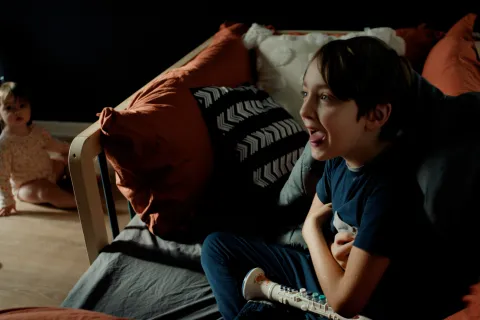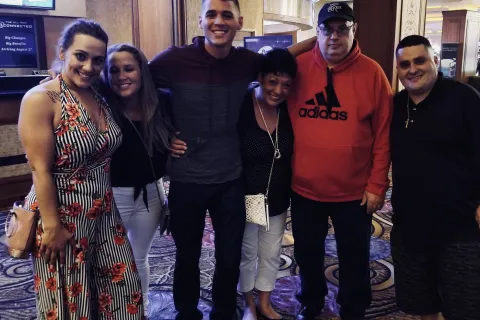Autism Halloween tips
By Ethan HirschbergWhen most kids think of October, they think of Halloween. As you know, kids love Halloween because they get pounds of candy, which means nightmares for parents. Additionally, kids love to dress up in costumes with their friends to go trick-or-treating. When I was younger, this was not the case for me.
Tricks and tips to make Halloween a treat
Halloween social story
Many kids with autism (especially me) have difficulties during Halloween. The first thing that my mom did to help me was make a social story. A social story is a mini storyline that my mom made up about the Halloween rituals. It included getting dressed in a costume, leaving our house, going to other houses, knocking on the door, waiting patiently, saying “trick-or-treat,” getting the candy, and then saying “thank you.” It also included what things I should do (only take 1 or 2 pieces of candy), and circumstances that might come up, like not liking the candy given to me. We would read this in the weeks leading up to Halloween.
Customize the Autism Speaks Halloween personalized teaching story to help your autistic child this Halloween.
Practice wearing the costume at home
I’ve never liked to dress up in costumes, whether it’s for Halloween, a Jewish holiday, school dress up days, or a school play. I’ve hated having anything on that’s not my regular clothes. This was obviously a problem for me since everybody who trick-or-treats dresses up. Costumes were always uncomfortable for me because of my sensory issues. Because of this, my parents would buy the costume a month or so in advance and we would practice wearing it daily so I could get used to it. One thing that did help was to dress up as something related to my special interest at that time, such as a police officer or firefighter. I was often shy and embarrassed to be seen in my costume because I didn’t like extra attention on me, but I was motivated by candy so I could be distracted by that.
Saying Trick-or-Treat
Besides not liking costumes, I have never l liked saying “trick-or-treat.” This is because I was shy and didn’t like talking to people that I didn’t know really well. It never helped when I went to my neighbor’s house and they would say something like “Ethan, what are you supposed to say?” I usually froze up and my mom would end up saying “trick-or-treat” for me. To help with this fear of saying “trick-or-treat,” my mom, dad, and ABA providers would practice with me for weeks in advance. This way, I would be more used to it when the time came. Also, at first I only went to well known neighbors and then I called it quits. Over time, I worked up to more and more houses.
Note: If your child is nonverbal, does not want to or cannot say "trick or treat," you can print this sign to take with them.
Decorate pumpkins instead of carving
Pumpkin carving was also very difficult for me during Halloween. I had trouble with this due to my sensory issues. The feel of the inside of the pumpkin as well as the smell of the pumpkin grossed me out. So, my parents bought colored pegs for me to hammer in to decorate my pumpkins. Now there are even special paints and stickers that can be bought as well. By doing this, my parents gave me a different way to “carve” pumpkins.
Let your child choose a costume
The last piece of advice is to not make your child wear a costume that they don’t want to wear. I guarantee that if you make them wear a costume that they don’t like or aren’t comfortable in, none of what I just said will help. I have always refused to do anything that I’m not comfortable with, especially when it comes to clothing. If my mom were to pick out a costume for me that I didn’t like, there would be no chance of me wearing it, but there would certainly be a likelihood that I would argue and fight about it. If your child has no interest in Halloween, don’t even have him/her participate in it. Since I was interested and really liked candy, my mom and dad were able to help me have fun childhood experience like most other kids.











